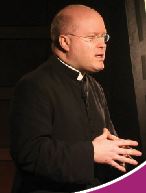 Today we are going to discuss what happened with the fall. Prior to the fall, there was a great trust between man and woman, and also a great trust between the human person and God. When original sin came, that whole trust was ruptured and as a result there was a great disruption in the love between man and woman and the love between the human person and God.
Today we are going to discuss what happened with the fall. Prior to the fall, there was a great trust between man and woman, and also a great trust between the human person and God. When original sin came, that whole trust was ruptured and as a result there was a great disruption in the love between man and woman and the love between the human person and God.
Where we’re going to be going today, (in our discussion about the Theology of the Body) with Christ and the Holy Father (Bl. Pope John Paul II) is back to that threshold between man and woman before sin, and man and woman after sin, in order to help us locate ourselves in this historical reality we live in and to heed Christ’s Voice so that we might recover that original nuptial spousal meaning of the body, and so love each other as God intends us too.
When we look back at the Sermon of the Mount that Christ preached, Christ was giving us a new form of morality. The Jews, much like many people in our own day, had thought that morality was just a bunch of norms, of commandments or rules for them to follow externally. If you look at the Old Testament, there were 613 commandments there, and as Jesus described the Pharisees in the New Testament, they were the ones who just wanted to keep to the letter of the law and they thought that if they kept the letter of the law, everything was fine in their relationship with God.
Jesus wanted to take them back to, not just norms or rules, but specifically to form men and women who were subjects of morality, men and women who chose to do the right thing. So on the Sermon on the Mount, He had a series of what Biblical scholars call the Anthesis. “You have heard that it was said, ‘you shall not kill’, but I say to you, whoever hates his brother has already committed murder in his heart.” Jesus wanted to take it from the norm of the Commandment, “Thou shalt not kill”, to the subject of morality and make sure that he (man) never even desires that type of thing.
Jesus does the same thing with His teaching on sexual love. In the Sermon on the Mount, Jesus said: “You have heard it was said, ‘you shall not commit adultery’, but I say to you, everyone who looks at a woman with lust has already committed adultery with her in his heart.” So the lustful man is the one to whom Christ directs His words and doubtless many of Christ’s listeners on that mountain would have seen themselves singled out by the Lord, much like men and women of our day, were caught under the concupiscence of the flesh or caught under lust.
Christ wants to take us beyond merely keeping the Sixth Commandment externally and not committing adultery in the flesh but He wants to form us as a subject who will be able to recover that nuptial love for the other person for which God created us for in the beginning. But in order to understand in its depths what Christ was saying in His Sermon on the Mount, Pope John Paul II wants to take us back to the fall, back to the original sin of Adam and Eve which explains how man became lustful in his heart over time. And in order to describe the effect, we have to go back to the cause.
Let’s head back to the Book of Genesis. If you remember what was said in the Book of Genesis about the fall; God had given Adam and Eve everything, including His Love but He had given them one boundary that they were not to eat the fruit of the tree of the knowledge of good and evil. Eventually, the serpent came and tried to insert himself in that relationship of trust, that relationship of loving and confidence between the created being and the Creator. He said, “No, you shouldn’t really trust God. He wants you not to become like Him and that’s the only reason why He gave you this Commandment. If you eat this fruit (of the tree of knowledge of good and evil), you will become like God.” And so Adam and Eve, disobedient, lacking the trust that they needed to have in God, took of that fruit of the tree of knowledge of good and evil and everything in their existence changed.
What we see is the dramatic and immediate result. They became afraid of each other and hid themselves from each other, covering up the most distinctive parts of their bodies, because rather than having their bodies be a nuptial sign calling each other to love, and as something in which they looked at as a summons to give of themselves to love, they started to see their body as something that could be appropriated by another.
There was an incredible lack of trust between them and that lack of trust invaded their relationship with God. They hid themselves, even from God, such that when God came and said, “Where are you?” Adam said, “I was afraid, because I was naked, so I hid myself.” They were naked and, now, shamed. “(This) points,” John Paul II said, “to the radical corruption in the meaning of original nakedness.” Original nakedness was supposed to be this great sign of love but instead it became a sign of confrontation between man and woman.
It was supposed to be an expression of the person’s original goodness and the goodness of the original world. But man’s relationship to the original world had changed. That’s why God had told Adam after the fall, “You will now have to till the soil, with your sweat; it will no longer be your food naturally and easily.” There was a discordance introduced between man and the created world.
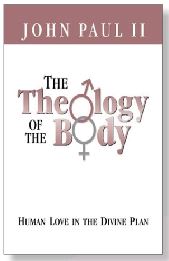 Beyond the original fruitfulness of human love, which was a natural outgrowth of their masculinity and femininity, their becoming one flesh in the nuptial communion of persons; even that was disrupted when God said the consequence. It was not so much a penalty, God wasn’t punishing Adam and Eve so much; it’s just a natural consequence of what their sin meant.
Beyond the original fruitfulness of human love, which was a natural outgrowth of their masculinity and femininity, their becoming one flesh in the nuptial communion of persons; even that was disrupted when God said the consequence. It was not so much a penalty, God wasn’t punishing Adam and Eve so much; it’s just a natural consequence of what their sin meant.
That fruitfulness which was a natural outgrowth would now be brought about, likewise, in pain. Eve would experience pain in childbirth, it would no longer be the unceasingly and unmitigatingly joyous fecundity that God had intended from the beginning.
And most importantly, sin caused a loss of that original certainty of the image of God expressed by the communion of persons in nuptial love. Man and woman no longer so easily saw themselves as made in the image and likeness of a God Who is love, Who is the communion of persons. This led to the second discovery of sex, John Paul says. The original discovery of sex was this great call to communion in the body, this personal communion that would be expressed in the sacrament of their making love together.
The second discovery of sex, which comes now after the fall, was when Adam and Eve looked at each other and they covered themselves from each other. The communion that was meant to be achieved in the nuptial union, would only be incomplete until they were to recover that true freedom that comes from purity of heart, so that they could give of themselves totally over to the other and receive the others’ gift, totally and completely.
There was a breakdown in that original communion, and man and woman have been suffering from that breakdown ever since.
Christ takes us to the discussion of what real lust is. Lust is that original breakdown, that original sin in the consequences. St. John the Evangelist, in his first letter, described the consequences of original sin and said that it led to a three-fold lust; a lust of the flesh, a lust of the eyes and the pride of this life. What St. John was pointing to was that lust changed who man was. Original sin transformed man from a lover into a lustful man; from a giver of himself and a receiver of who the other person is as a gift, to a taker and user of the other.
And so, what St. John says, is in this transformation of man’s heart after the fall – he began to lust in his entire existence, not just in sexual appropriation of the other person but also in his lust for money, in his desire to dominate other people in his lust for power.
Christ knew that, and He took man back to what happened during New Testament times, in order to improve upon it and bring about the redemption of the body He had come to effect in His own Body. What had happened in the Old Testament is that there had been various compromises done, and not just in terms of divorce. Pope John Paul II describes the capitulations that were made in terms of polygamy, that even with David and Solomon there could be at least this commitment in marriage.
But because of the lust of the flesh, they would go to lusting after others who were not even their wives. God permitted it, although He did not want this polygamy to exist so that Solomon could have dozens of wives and David could have certainly more than one as well. That was not what Christ had said that man was originally made for. So in the Old Testament times, there were various compromises but in the Old Testament as well, the prophets especially saw what was happening to man, the subject of his lust and how it was leading him to desire these compromises against what God’s original plan had been.
When you look at the book of Proverbs, just a short little chapter, “do not desire her beauty in your heart.” (we read in Proverbs 6:25.) That passage understood human psychology very well, that we can lust after women’s beauty in our hearts to try to appropriate it and that’s the source of falling away from the nuptial committed meaning of the body that God had given us in the beginning.
In the Book of Sirach, we see something beyond it and the author, inspired by the Holy Spirit says two kinds of individuals multiply sins and a third incurs wrath. Hot passion that blazes like a fire will not be quenched until it burns itself out and whoever commits fornication will never cease until the fire burns out. It compares lust to this unquenchable fire.
Jesus wants to come as the Divine Fireman to put out that fire so that that person can burn with another flame. Literally, the flame of the love for God; the burning, pure flame of true love, like the burning bush by which God spoke to Moses before He had sent him to Egypt. God was preparing His people by His teaching on adultery in relationship to their communion with Him, their covenant with Him, to understand what Christ was going to say about the covenant and adultery between man and woman.
Christ was coming specifically to talk about the monogamy that needs to exist; that the man and woman are supposed to be united together and only together until death. And God showed that through what He had said to the prophets in the Old Testament. Every sin of infidelity of the people of Israel against God; God compared in the prophet Isaiah, in Hosea, Ezekiel and in Jeremiah, to adultery committed against God, because Israel was supposed to have a monogamous relationship with the One True God, just like man and woman were supposed to have a relationship uniquely with each other.
That brings us up to what Christ said in the Sermon on the Mount that “anyone who looks on a woman with lust has already committed adultery in his heart.” Lust is this adultery in the heart and Christ came to save man from those falsely passionate, falsely burning desires which will never be quenched.
 How does that come about?
How does that come about?Christ calls man to purity of heart; “blessed are the pure of heart, they shall see God.” Christ’s whole mission in this statement was to rediscover man’s true ethical values. What He had noticed was that lust and love were warring together in man’s heart and that woman had become for man an object of sexual values rather than a person. The only worthy response would be love, would be that gift of self. And in order for man to become that lover again, he had to master that lust.
Christ had come to create a new ethos (Greek for custom). Over the course of the Christian centuries though, that ethos was misinterpreted, Christ’s statement about adultery in the heart was taken out of context and used against, what Pope John Paul II says, was the original meaning of this loving communion of persons expressed though the body that God had created in the beginning. He singles out two particular candidates for this false understanding.
The first he called Manichaeism. It was a heresy in the early Church that said that everything material was bad and everything spiritual was good. Since love was expressed though the body and the body itself was material, therefore bad; love would be bad, carnal love was only to carry out the duty of procreation; there was supposed to be no real love expressed there because the body was considered bad.
Pope John Paul II says, in contrast, what Christ was attacking was not the body; He was attacking lust in the heart and lust in the heart that sometimes expresses itself in the body. So the Manichean solution was false.
The second, the Fall solution, is a more modern solution which flows out of a false understanding of this three-fold lust, St. John describes in his first letter, the lust of the flesh, the lust of the eyes and the pride of this life. And he ascribes this to somebody that Paul Ricoeur, a great philosopher of modern times, said were the “masters of suspicion.”
These “masters of suspicion” were those who completely distrusted the human heart that said that the human heart could never will what was truly good. And he named the three of them. He said Freud was the one that said that the human heart would always respond under the lust of the flesh, there was nothing that could be done about it. He said that Marx was the one who founded Marxism that said that everything was reduced to the lust of the eyes, to this type of possessiveness for things, for the economic man. And the third was Friedrich Nietzsche, the Nihilist German philosopher, who said that everything was a will to power based on this pride of this life, this desire to dominate others and that nothing could be done about this.
Pope John Paul II says that each was wrong, each was based on a little bit of truth deriving from this three-fold lust but their conclusions on the basis of it were off because man’s heart can be healed, that those three-fold lusts are not the final thing to be said about man. Christ came to bring us back to the beginning and forward to the end.
The first thing, the Pope says, that needs to be done is that we need to rehabilitate the word eros (Greek word for love, especially sexual love). Originally in Platonic philosophy, eros was a desire that was driving us towards the good, the true and the beautiful. It was meant to bring us to the things that really matter, the things that really last. But what happened after the sin, especially through the history of this false appropriation of what Christ was saying in the Gospel and the false appropriation of man’s experience of lust in his heart, was that eros became something by which men desired others for their own sexual gratification. That’s what we see in a lot of pornography today.
That type of eros needs to be rehabilitated. Just like what John Paul II said as a young priest in Love and Responsibility. He needs to introduce Christ’s type of love into the human experience of love. Christ Agape (pure Christian love), the self-giving love as the Greek word says, into the human experience of eros, to rehabilitate eros and put a real ethos, a real ethic, a morality back into ethos so that it will truly be loving and help man.
In conclusion, (of this segment) on the basis of all that Christ has said about lust in the human heart, where do we go from here?
Christ says that man is the subject of this new ethos of the redemption of the body, by Christ Himself taking the body into the Godhead during the Incarnation; Christ has redeemed the human body and we need to enter into that redemption of Christ, so that we can share His fruits. That is truly the ethos of the new redemption.
By entering into Christ’s union with His Body, He Who says always, “This is My Body, given for you,” we rediscover how we are called to love and give of ourselves in loving communion to each other and back to God. That involves self-mastery, that involves temperance, but it also involves love. Pope John Paul II says that this might be experienced in a certain emptiness at first but then it leads to a tremendous flourishing of human love.
In our next talk, we will discuss where the Holy Father goes from here, how purity of heart is essential and how it can truly set man free.
Fr. Roger Landry
(to be continued in the next issue)
This is a partial transcript of a talk given by Fr. Roger Landry that has aired miltiple times on EWTN. It can be found on YouTube. Fr. Landry is pastor of St. Anthony of Padua Parish in New Bedford, Massachusetts, and is executive editor of the Anchor, the weekly newspaper of the Diocese of Fall River. His homilies and articles are found at catholicpreaching.com. We thank Fr. Landry for the permission to print this homily.
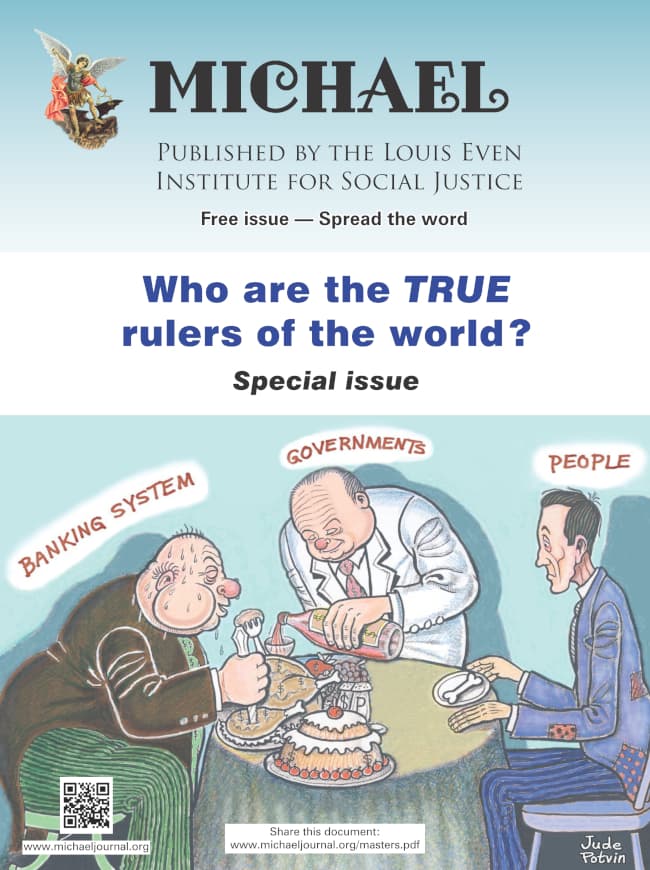 In this special issue of the journal, MICHAEL, the reader will discover who are the true rulers of the world. We discuss that the current monetary system is a mechanism to control populations. The reader will come to understand that "crises" are created and that when governments attempt to get out of the grip of financial tyranny wars are waged.
In this special issue of the journal, MICHAEL, the reader will discover who are the true rulers of the world. We discuss that the current monetary system is a mechanism to control populations. The reader will come to understand that "crises" are created and that when governments attempt to get out of the grip of financial tyranny wars are waged.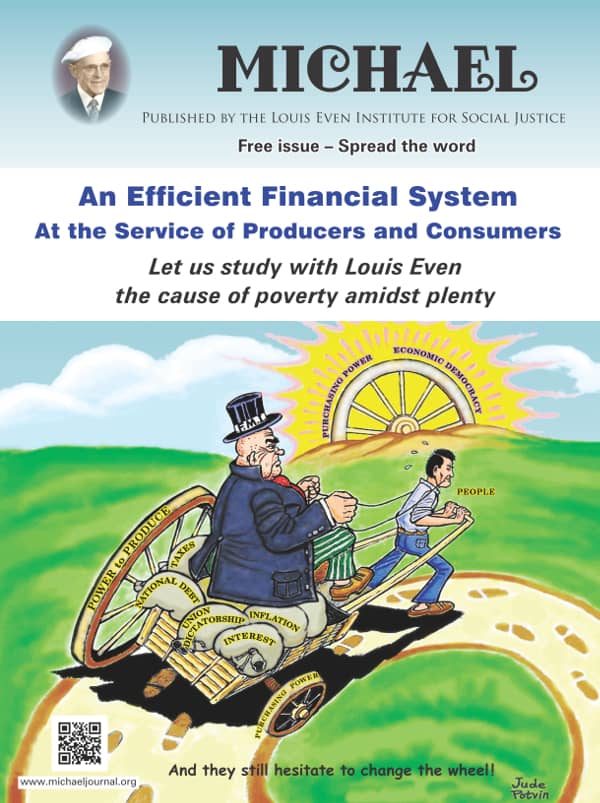 An Efficient Financial System, written by Louis Even, is for the reader who has some understanding of the Douglas Social Credit monetary reform principles. Technical aspects and applications are discussed in short chapters dedicated to the three propositions, how equilibrium between prices and purchasing power can be achieved, the financing of private and public production, how a Social Dividend would be financed, and, finally, what would become of taxes under a Douglas Social Credit economy. Study this publication to better grasp the practical application of Douglas' work.
An Efficient Financial System, written by Louis Even, is for the reader who has some understanding of the Douglas Social Credit monetary reform principles. Technical aspects and applications are discussed in short chapters dedicated to the three propositions, how equilibrium between prices and purchasing power can be achieved, the financing of private and public production, how a Social Dividend would be financed, and, finally, what would become of taxes under a Douglas Social Credit economy. Study this publication to better grasp the practical application of Douglas' work. 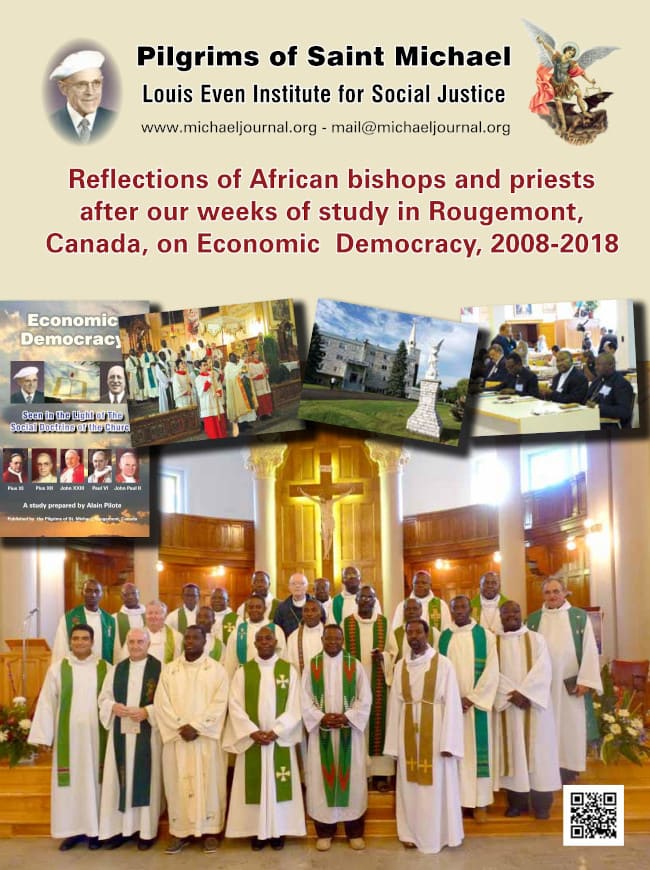 Reflections of African bishops and priests after our weeks of study in Rougemont, Canada, on Economic Democracy, 2008-2018
Reflections of African bishops and priests after our weeks of study in Rougemont, Canada, on Economic Democracy, 2008-2018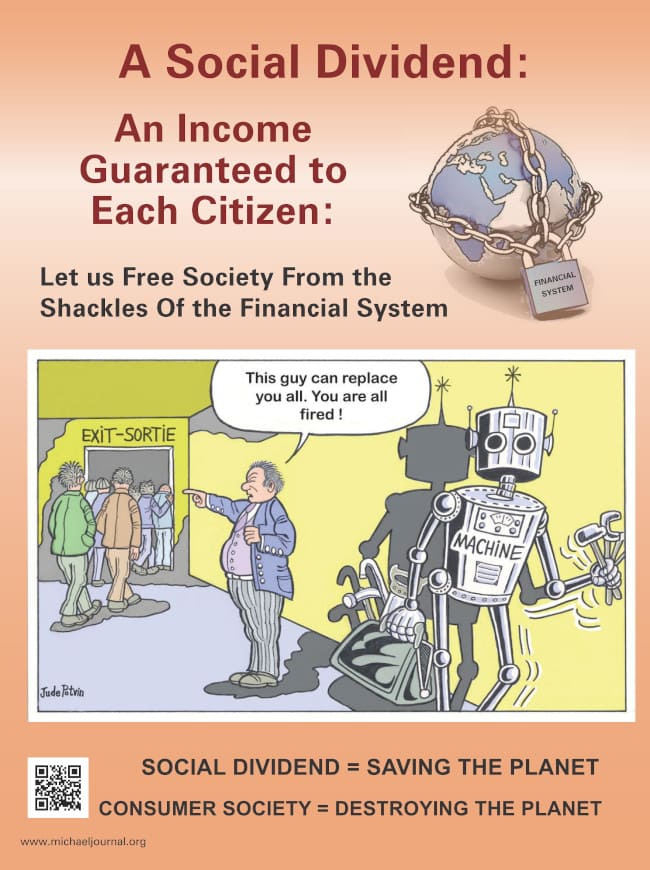 The Social Dividend is one of three principles that comprise the Social Credit monetary reform which is the topic of this booklet. The Social Dividend is an income granted to each citizen from cradle to grave, with- out condition, regardless of employment status.
The Social Dividend is one of three principles that comprise the Social Credit monetary reform which is the topic of this booklet. The Social Dividend is an income granted to each citizen from cradle to grave, with- out condition, regardless of employment status.Rougemont Quebec Monthly Meetings
Every 4th Sunday of every month, a monthly meeting is held in Rougemont.